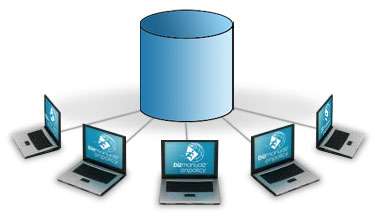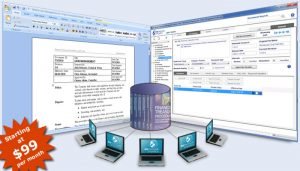How Do You Train Employees on Procedures?

Training employees on procedures is a critical aspect of ensuring operational efficiency, consistency, and compliance within any organization. Whether you’re onboarding new hires or updating existing staff on revised procedures, a well-planned training program can make all the difference. In this blog post, we’ll explore best practices and effective strategies for training employees on procedures.
Mastering the Art of Training Employees on Procedures: A Comprehensive Guide
The task of training employees on procedures is more of an art than a science. Here is a comprehensive guide to the art of training employees on procedures.
1. Understand Your Procedures
Before you can effectively train employees on procedures, you need to have a deep understanding of the procedures yourself. Take the time as the manager to review and familiarize yourself with the procedures thoroughly. Ensure that you can articulate each step clearly and explain the rationale behind them. This will enable you to convey the information effectively to your employees during training.
2. Develop a Training Plan
Start by developing a comprehensive training plan that outlines the objectives, content, and delivery methods for your training program. Consider the different learning styles and preferences of your employees and tailor your training approach accordingly. Determine whether training will be conducted in-person, through online modules, or a combination of both.
3. Break Down Procedures into Digestible Chunks
Procedures can be complex, especially if they involve multiple steps or processes. Break down procedures into smaller, digestible chunks to make them more manageable for employees to learn and retain. Present each step clearly and sequentially, providing context and examples where necessary to reinforce understanding.
4. Provide Hands-On Training
Whenever possible, incorporate hands-on training into your program to allow employees to practice executing procedures in a simulated or real-world environment. This hands-on experience reinforces learning and helps employees build confidence in their ability to perform tasks correctly. Consider using role-playing exercises, simulations, or interactive workshops to facilitate experiential learning.
5. Use Visual Aids and Multimedia
Utilize visual aids and multimedia resources to enhance understanding and engagement during training sessions. Incorporate diagrams, flowcharts, videos, and interactive presentations to illustrate key concepts and steps visually. Visual aids can help reinforce verbal instructions and make complex procedures easier to comprehend.
6. Encourage Questions and Feedback
Create a supportive learning environment where employees feel comfortable asking questions and providing feedback. Encourage active participation and engagement during training sessions by inviting questions, encouraging discussion, and soliciting input from participants. Address any questions or concerns promptly and provide clarification as needed to ensure understanding.
7. Provide Ongoing Support and Reinforcement
Training shouldn’t end once the initial sessions are complete. Provide ongoing support and reinforcement to help employees apply what they’ve learned in their day-to-day roles. Offer refresher courses, provide job aids or reference materials, and offer opportunities for additional practice and feedback. Regularly revisit procedures during team meetings or one-on-one sessions to reinforce learning and address any challenges or issues that arise.
Here’s a scenario: New Employee to be Trained on a Procedure
A new employee has to be trained on a particular procedure. The person who normally conducts the training (the area supervisor) is unexpectedly out of the office for a couple of days, due to illness. You, the Human Resources director, prefer not to have the new employee sitting around while waiting to be trained. They ought to be able to familiarize themselves with the procedure; you believe this will help speed up the training.
Work Area Procedures
After you have introduced the new employee to the software to plan staff schedules so that he does not miss his attendance, you go to the work area to ask about getting a copy of the procedure; two employees volunteer their copies. You glance through their copies and find that (uh-oh!) they’re not in agreement. Parts of the procedure have been lined through and comments handwritten on them. “What about a master copy?”, you ask.
Procedure Master Copy
The employees both assume the supervisor has it, but they have no idea where she keeps it. It might be in her desk or in one of the file cabinets; they’re all locked.
You decide to look on the company’s document server for a backup copy before bothering the supervisor at home. You find there’s neither rhyme nor reason to the server’s directories. You think there ought to be an “Operations” folder and maybe a subfolder called “Procedures”, but that’s not the case. (Right then, it occurs to you that all the HR information is on your computer and you’re not backing it up on the server. You make a note to start doing that, soon.)
Document Server Procedures
You search the entire document server for one procedure. In about 15 minutes, you think you’ve found what you were looking for. Only that copy was last updated 5 years ago — any resemblance between it and the other two copies are superficial. Who knows if the procedure’s ever been reviewed?
You know this is not a good situation; it would be worse if you had an audit coming up soon. For the time being, you have one of the employees make a copy of his procedure for the new hire and tell the new hire to “read the procedure and ask him if you have any questions.” Then, you send an email to management, expressing your concerns.
Document Server Control
Is this document control? Are you thinking, “There has to be a better way”? Or, are you thinking, “Looks a lot like my company”?
“Lack of structure” is one reason to consider procedure management software; it gives your documents the structure and organization they need.
Document Management System
Think about the good and the bad of your company’s document management system. What do you like about it? What don’t you like? Have you had any major problems with it? Do you foresee any?
Wouldn’t you be better off with policy and procedure management software?
Training Employees on Procedures
Training employees on procedures is a vital investment in your organization’s success. By following these best practices and effective strategies, you can develop a comprehensive training program that equips your employees with the knowledge, skills, and confidence they need to perform their roles effectively and contribute to the overall success of your organization.
Remember, effective training is an ongoing process that requires dedication, patience, and continuous improvement. By prioritizing training and investing in the development of your employees, you’ll set your organization up for long-term success and sustainability.















